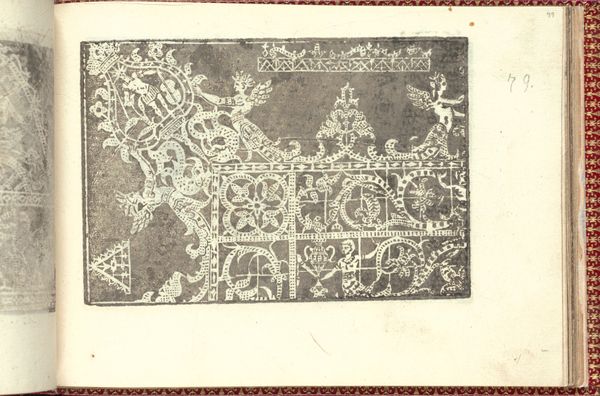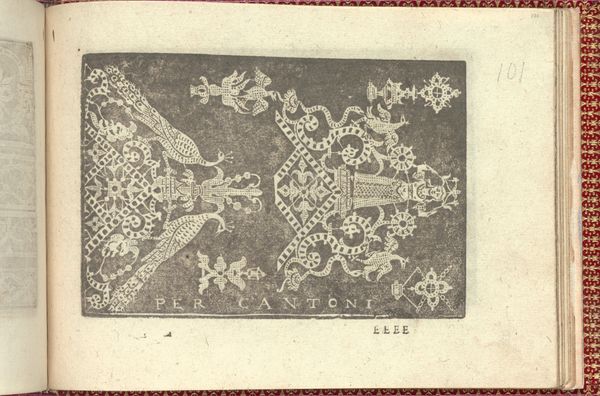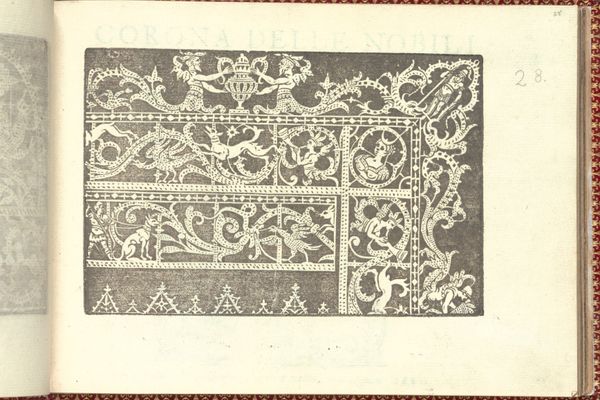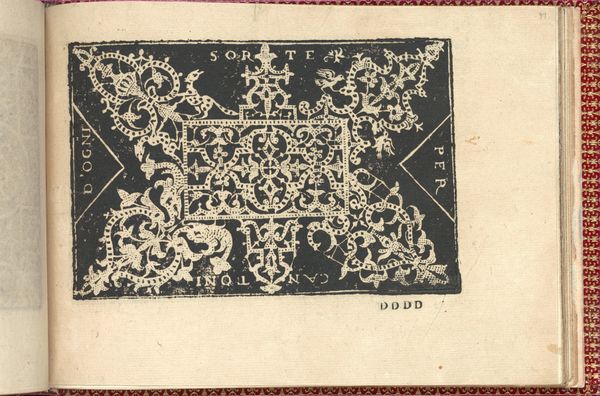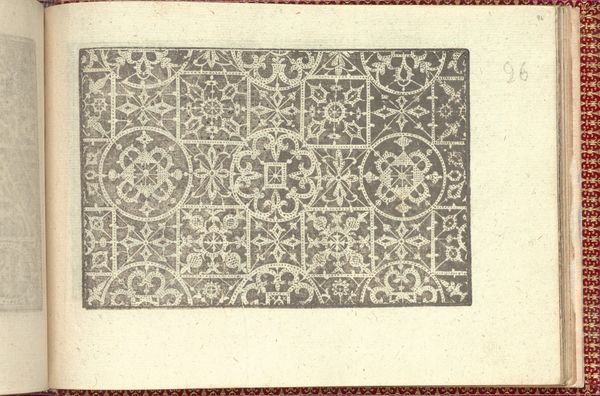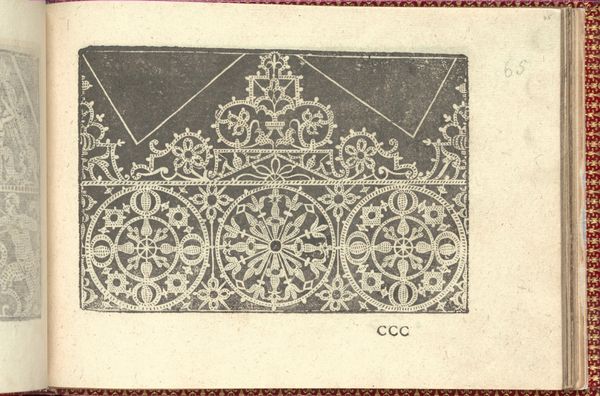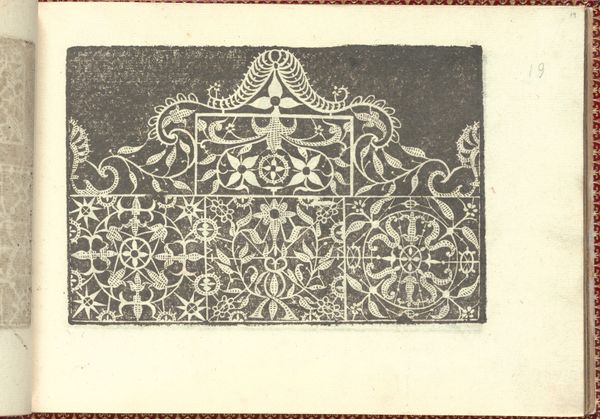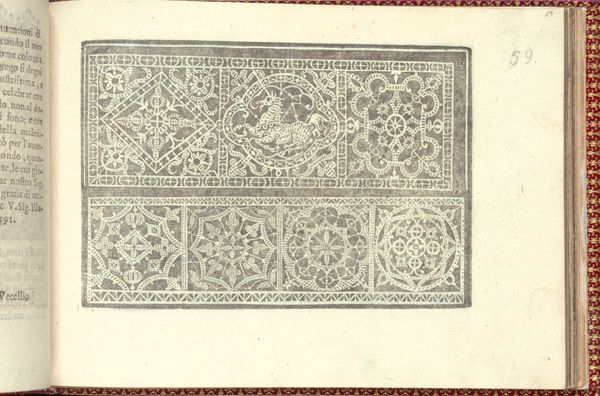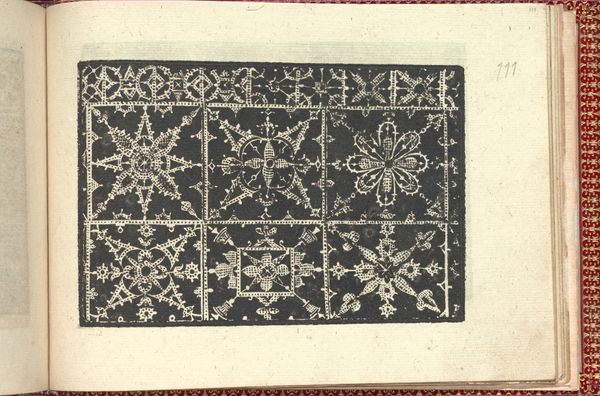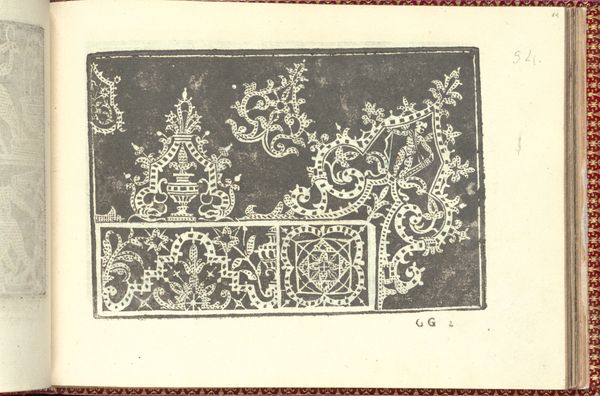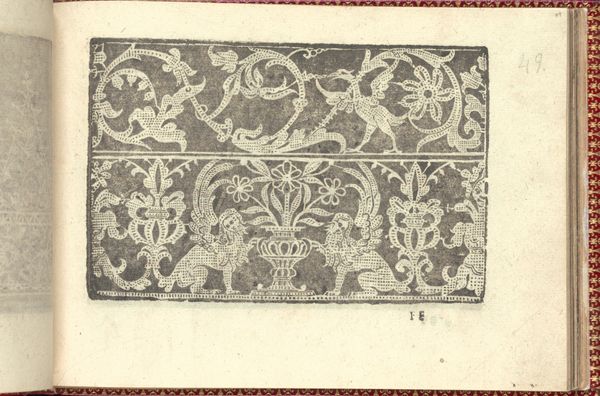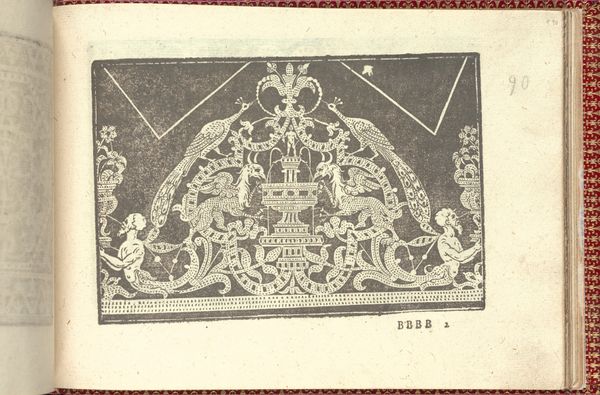
Corona delle Nobili et Virtuose Donne: Libro I-IV, page 52 (recto) 1601
0:00
0:00
drawing, graphic-art, ornament, print, paper
#
drawing
#
graphic-art
#
ornament
# print
#
book
#
paper
#
decorative-art
#
italian-renaissance
Dimensions: Overall: 5 1/2 x 7 11/16 in. (14 x 19.5 cm)
Copyright: Public Domain
This is page 52 from Cesare Vecellio's "Corona delle Nobili et Virtuose Donne," a pattern book from the late 16th century, made with woodcut and letterpress in Venice. These books offered designs for women's crafts, but they were also deeply implicated in defining elite female identity. These intricate patterns were intended for embroidery and lacework, skills valued in noblewomen. Vecellio, however, wasn’t simply providing patterns; he was shaping a vision of ideal femininity, linking virtue with artistry, and nobility with domestic accomplishment. The designs themselves—geometric and floral—speak to the broader cultural context of the Renaissance, where classical motifs were reimagined. Yet, by framing these designs as uniquely suited for women, Vecellio reinforced societal expectations about gendered roles. Look closely, and you might feel the tension between creativity and constraint, a tension that many women artists and artisans navigated during this time. The emotional weight of these expectations is palpable, a reminder of the complex interplay between art, identity, and social norms.
Comments
No comments
Be the first to comment and join the conversation on the ultimate creative platform.
